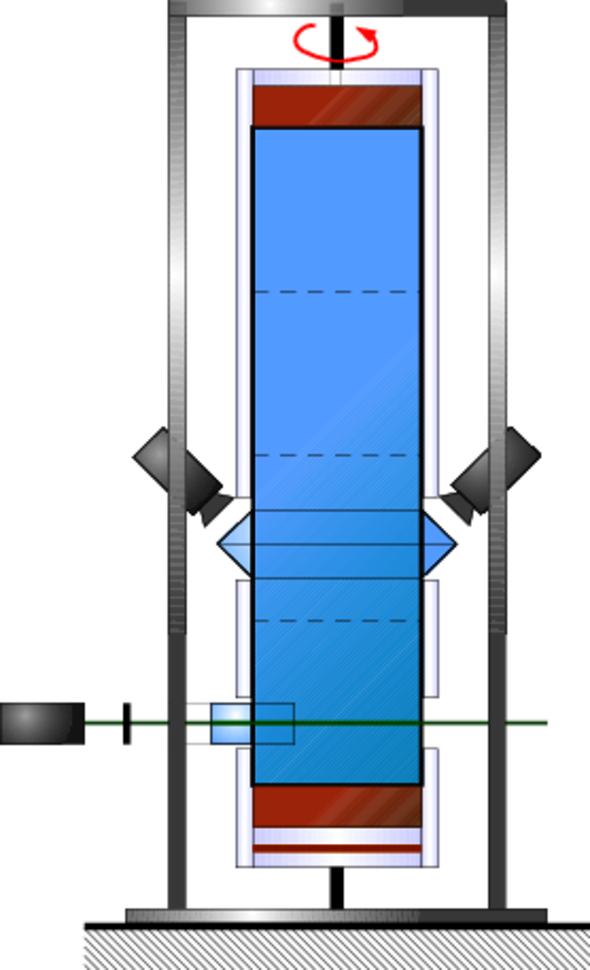
- Research
- 08/01/2016
The earth in a pillar
Our future on earth is determined by turbulent convection in the atmosphere, oceans and the liquid core of the earth. Yet we know rather little about those influential flows; after all, they are hard to measure. That is why Rudie Kunnen wants to mimic these geophysical phenomena in a narrow, rotating, four-meter-high cylinder. The fluid dynamics expert was recently given a European Starting Grant of 1.8 million euro to do this.
Many large-scale flows in nature - such as air currents in the atmosphere, ocean currents and the movements of liquid metals below the earth’s surface - are driven by heating and influenced by the rotation of the globe. There is a great deal we already know about this so-called rotating Rayleigh-Bénard convection, says Rudie Kunnen. Still, the exact effect of these flows on a geophysical scale is an enigma which climate scientists would really like to solve.
He himself is not a climate expert, Kunnen hastens to say. “Yet I do know that the amount of heat leaking away into space depends on the flows in the atmosphere. It is practically impossible to measure that, so you need flow models to make predictions about it.” Hence his expectation that his research can contribute to a solution of the climate puzzle.
The new project led by Kunnen is particularly relevant to what is going on beneath our feet, the physicist emphasizes. As there are gigantic currents of liquid iron circulating inside the earth’s core, the earth is surrounded by a magnetic field. This geomagnetic field protects us from all sorts of harmful radiation from space: if it should disappear, we would not survive. Moreover, even minor changes in the flows of iron far below the earth’s crust may have major consequences. “If the magnetic north pole should migrate to the Netherlands, for instance, the cosmic radiation would paralyze all our communication.”
So there is every reason why we should want to know the exact behavior of those inner-earth flows. Unfortunately the earth’s core is inaccessible to us, so that we depend - even more so than for the atmosphere - on computer models with extrapolations of measurement data from the lab. It is extremely difficult, however, to create a system in the lab that properly mimics the geophysical processes going on inside the earth’s core.
Taking those scale effects into account, Rudie Kunnen arrived at the conclusion that he can learn the most about the above geophysical flows in a small cylinder with a forty-centimeter diameter and a height of four meters. Anything but a globe, then, but a kind of hollow pillar rotating around its own axis, in which water is heated by a source below to a temperature above eighty degrees Celsius and cooled down at the top.
The cylinder needs to be narrow, he explains, because you want to be able to spin it round without the impact of the centrifugal force becoming too big. “For that would cause the heated liquid to be pressed towards the axis of the cylinder because it is lighter than its environment.” And that is an effect which he does not want to investigate. The higher the cylinder, the better: indeed, the pressure effect of the heating from below increases by the third power of the height. “Four meters is a practical height, for then we can still just fit it into our lab.”

Discussion